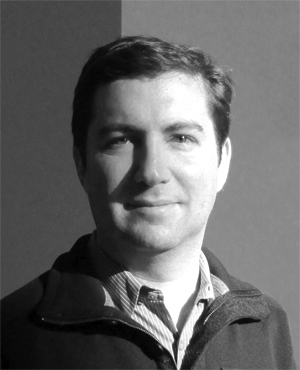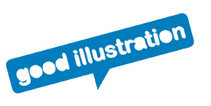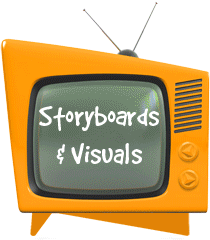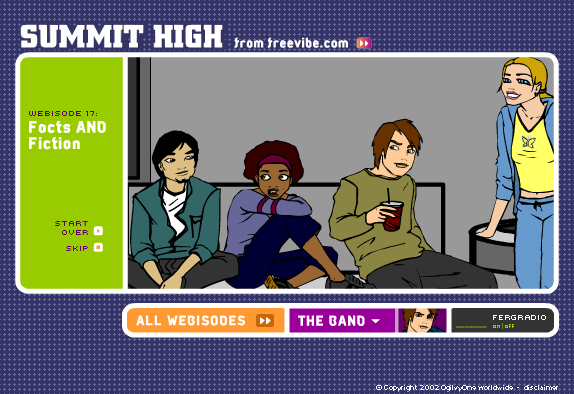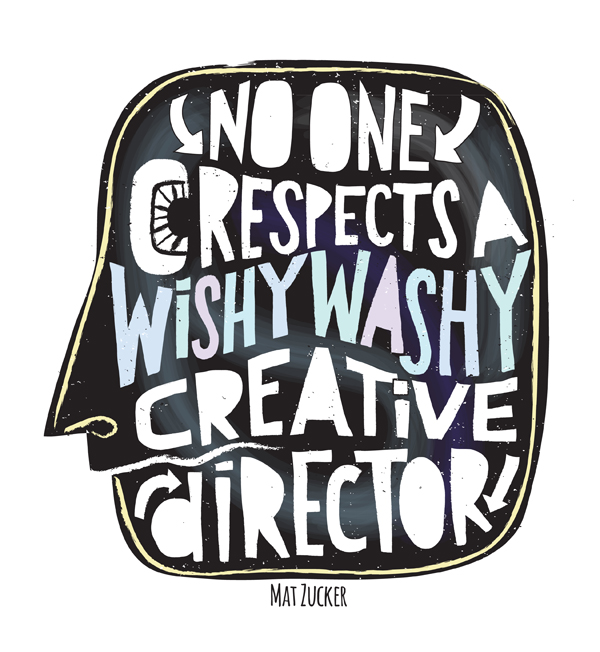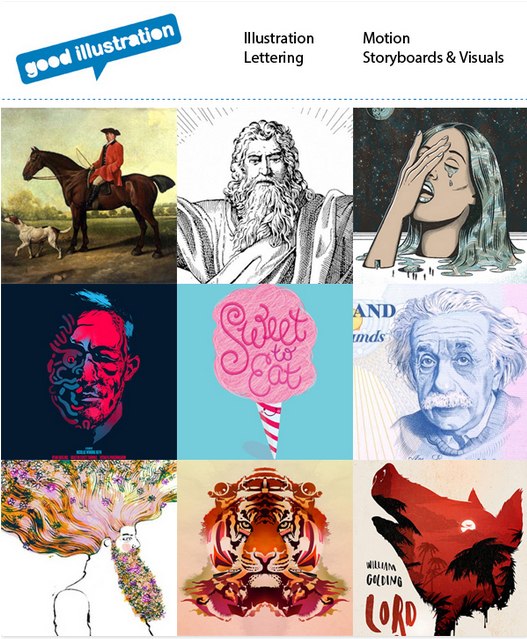Walk us through some of the highlights of your distinguished 20 year career.
“Distinguished” makes me sound far taller + grayer than I am. But 20+ years has indeed been a full bag. Serving as a Cannes Lions Juror was a monumental highlight – incredible for the honor, the ego, and the experience debating great work with top creatives from around the world. Plus, I was able to judge with my buddy and fellow USA judge Gary Scheiner, Matt Batten (now CCO of Wunderman UK), Chris Clark (CCO DigitasLBI) and a crew of top folks too cool to forget.
But to be honest, the first time I felt any kind of special in the business was during my very first radio campaign in my very first copywriter job at FCB/Leber Katz Partners for Stella D’oro Cookies. For a chatty script of two women based on my mother and her best friend talking about these beloved fragrant cookies, we cast actresses Alice Playton (famous for Alka Seltzer Plop Plop Fizz Fizz!) and Cynthia Harris (actress on NBC’s “Mad About You”). I was just 24, these were the first “stars” I had worked with, and my nervousness must have shown. But Cynthia Harris told me that my writing was very funny so I relaxed and with the help of my producer Barbara Goldman, I somehow directed my first spots and the tagline “You Can Taste ‘Em Before You Taste ‘Em,” which sold a zillion cookies. Radio is a tough craft, and the experience would help me later as one of the first creatives to work in podcasting and later online video too.
A much more public highlight was years later as Chief Creative Officer of OgilvyOne New York. I was the creator and spokesperson for Search for the World’s Greatest Salesperson, our YouTube contest to find people who could sell in the spirit of David Ogilvy’s “Sell or Else.” It was great fun, put the agency back on the map, galvanized the entire network behind a single idea and got in The New York Times and media around the world. The print and blog interviews weren’t hard but even with media training, the stress got to me during a live on-camera interview for Australia’s biggest morning show; as I talked to millions down under, my eyebrows began to move in odd directions.
I would also say that some career highlights can actually be lowlights. In 2007, I left R/GA where I was leading a huge team on 10 Johnson & Johnson brands to run the entire Agency.com New York office which was utterly imploding. I could turn it around I (arrogantly) thought. And while it was certainly a rush to be in charge – I was even briefly co-president – but it was all so broken, all I could do was stem the flow until the agency just, well, died. Luckily we did some good work (see LG story below) since those were very tough, frustrating years.
As Global Executive Creative Director at Razorfish, how hands-on do you like to be with the creative process and what are some of the challenges of leading creative teams?
I’m unapologetically hands on, and I don’t understand creative directors who live in the clouds and don’t get dirty with the work. I want to see and review the brief, talk to the clients directly, see the rounds and rounds of ideas and give detailed notes, help shape the presentation, and more often than not, actually present the work first-hand. There are also ideas I may have in my mind or from someone else that I want to see explored to see if they have any merit. Sadly, these usually don’t get the energy from the team if they had come up with it on their own. One of the biggest challenges leading creative teams is that many of the most creative people do not have marketing or salesmanship anywhere near the top of their personal agenda, so while they have the talent to invent the ideas they don’t usually possess the judgment or taste to know what will work or fail. I tend to explain myself to death hoping they’ll pick up some of it for when they have my job.
From the plethora of award-winning campaigns you have masterminded, which would you select to share with our audience?
It’s been over a decade but my most treasured campaign experience is Summit High, a cartoon webisode series created way back the 2000s for the U.S. Office of National Drug Control Policy.Summit High follows the lives of five American teenagers in a suburban high school and how they deal with drugs. I grew up near Summit, NJ, so the name is a play off a nearby hometown. My art director partner Krista Masillonis (now CD at Hallmark) and I raided our childhood experiences for characters and juicy material. We had to be fairly low budget so the voices were all our friends at OgilvyInteractive, which is fun since a lot of us are still in touch today. We had fancy story arcs, character artifacts, audience participation, original music, including a deal with Sony, a mall tour, and even run-on tattoos before tattoos were mainstream. The brief was originally to do a one-off comic but Krista and I turned it into a series running for two years. All under the creative inspiration, supervision and tutelage of our creative director Mach Arom, who we lost way too young a few years ago. He was my friend and mentor – and the same to another hundred-plus people in the industry.
Tell us about the The Hindsight Career Project.
I believe our early experiences at work shape who we become later as leaders, so the Hindsight Project asks creative and marketing leaders to share lessons on camera for folks entering or rising up and how they learned them. it’s a chance to both share very practical wisdom with the next generation but also pay homage to those who shaped us into who we are today. It’s been extraordinary to watch people re-live their early stories and experience their generosity. We’ve heard from everyone from Will Travis of Sid Lee and Lori Senecal of KBS+ to ad legend and icon George Lois. I’m head over heels lucky that Ignacio Oreamuno and the Art Directors Club took us on, and for the last year, I’ve been producing it through the ADC. Here’s a recent clip which will teach folks who think it’s only about the work:
How has your creative leadership style evolved over the years.
I think because I became a creative director early on and because I have always looked younger than I actually am, I have had to prove myself as a leader more firmly. I’m collaborative and you have to be, but I do believe in “benevolent dictatorship.” Someone has to be in charge and I think creative should lead. Anything but a committee and no one respects a wishy-washy creative director. The biggest change I’ve noticed in myself is that I have become far more impatient with selling work. I want to sell the good idea NOW, not in “phase 2” — there is no phase 2 and you’ve got to be relentless with what you believe now and either sell it or not. More clients agree with this than you’d expect too. It’s their portfolio too. In fact, it’s everyone’s.
What’s the most ambitious project you’ve been involved in.
If you’ve ever worked with TBWA or know the agency’s work, you wouldn’t be surprised that it was while I was at Agency.com/TBWA. We had won a global assignment for LG, to launch a sexy new series of TVs called “Scarlet”. We created a misdirect on a global scale, first pretending we were launching a TV series called “Scarlet.” It had all the mechanics you’d use to launch a real TV series – a recognizable director and producer (David Nutter, famous for Smallville and Supernatural); a beautiful yet unknown actress from Canada; a web trailer with explosions; blog gossip; red carpet appearances and more. The ruse went on in over a dozen markets around the world for months, and I was so terrified it’d be found out, but everyone from PR to retail played along. At a red carpet big reveal in Los Angeles, we revealed that Scarlet was actually not a TV series, but a series of TV’s. Everyone cheered and no one (gratefully) booed. More press and consumer demand ensued. For the web site, we did one of the earliest attempts at eye-tracking software for navigation. The whole endeavor was one of LG’s best launches ever. This taught me the value of bold simple global ideas, the power of a courageous client, and how to pull of a stunt on a very very big scale.
Having served on international juries for many years, what advice would you offer young creatives looking to impress the judges with their work?
Doing something first, biggest (the world’s largest X) has been a winning secret for the last few years but it’s so common that the bar for claiming that is going up. I always think the best bet for a brand, for the consumer and for any award is to simply solve a real human need that’s been bugging us since we were amoebas on the shoreline. What’s the headline you want on your resume at the end of the year? What’s the headline on your tombstone when you’re dead? All the science and best practices of case study development aren’t a substitute for a great story of accomplishment.
What qualities are important to be successful in advertising?
These three aren’t talked about enough:
1. Preparation. The adage that good ideas can sell themselves is total b.s. — I meticulously prepare for presentations, and especially with so much done on the phone nowadays, I counsel creatives to printout their work and even write out their points and number them so they’re ready. This is not rehearsal, it’s preparation and polish, removing your awkward “Umms…” and flakiness and being absolutely impressive and clear. Also, when I have a thesis for an idea, I ask strategy or data people to help me pull numbers of what the impact of the idea may mean on the clients business. If you do x, your brand will benefit with y. It helps sell ideas and it’s crucial if you want to do anything transformational.
2. You have to be wanted in the room. It’s not about being liked but about being valued and your opinion being absolutely critical to any decision. Clients, account partners, strategy folks need to crave your opinion and your presence. When there aren’t many creative coattails to ride anymore.
3. Diversify your knowledge. Advertising isn’t advertising anymore, so you need to be even just a little bit knowledgeable about promotion, in-store, stunts and increasingly public relations. Read the trades, talk to the account and strategy folks at other agencies, see what wins at Cannes Lions PR and Activation.
Which ads have had the most impact on you, both positively and negatively?
Nike Women “If You Let Me Play” comes to mind first. This was Nike’s debut with women so it was a big moment in marketing. What stuck with me was then it was provocative to talk sports and girls but also it used facts to back up the claims. I never looked at sports the same way and when my first niece started to play soccer, I was thrilled.
More recently is “Twitter Army” for Brothers for Life, created by a fellow Cannes juror Xolisa Dyeshana‘s team at Joe Public in South Africa. It’s a very emotional use of Twitter and a great publicity stunt to educate the public. Here’s the case study:
There are tons of ads I hate but what drives me crazy is anything with an ellipses (…). I hate the ellipses. In a grotesque stretch of power when I was head of copy at Blue Marble, I banned it. In fact, the first thing I do at any agency is usually ban it on my team or office. This reminds me to talk to Razorfish about it.
Who was the last young creative to really blow you away with an idea?
Rose Saktor is a junior art director who I met first as my Cornell extern, a one-day shadow-a-professional type thing my university sets up. Rose was planning on becoming an account person but apparently after her experience at the agency for a day, she changed her mind for creative, enrolling at Miami Ad School, landed a few internships and then showed back up in New York with a great book. I was so happy I offered her a paid freelance gig on the spot, but she turned me down for a job at Barton F Graf 9000 which was pretty courageous and cool. I forgot all about it until a few weeks ago when I saw her on the evening news for the NYC Subway Experiment. What a great example of a creative person noticing something in the culture and figuring out something compelling to do with it.




